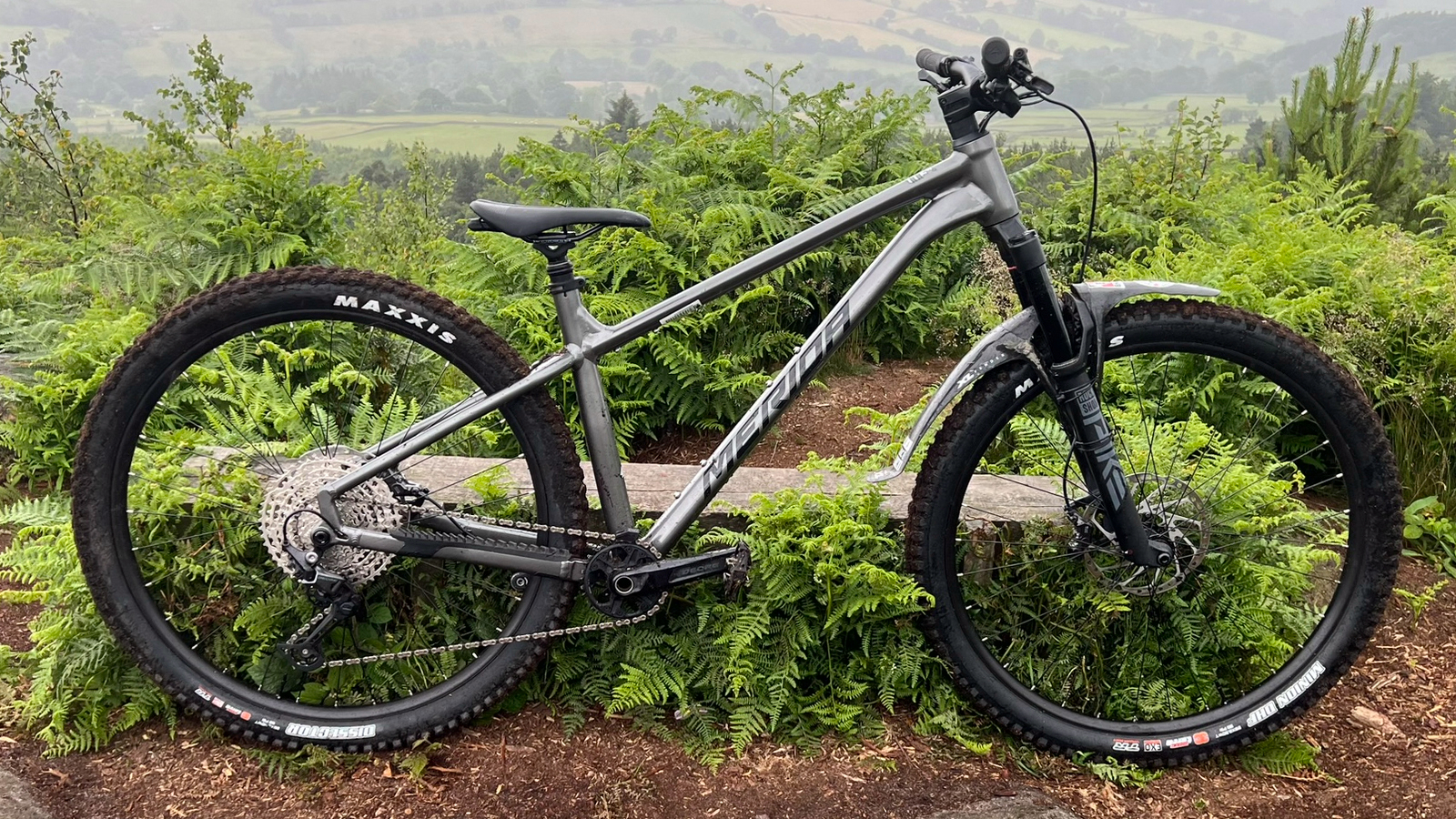
The original 2021 Big Trail started as a collaboration between Merida and UK dealers wanting something more rad than the average trail hardtail, but it’s become a super popular mix of tech-taming capability and everyday practicality the world over. For this latest 2025 version, Merida has made the geometry even more aggressive to create a serious rad ride that’ll kick ass on proper enduro trails while still letting you mount a kickstand for work days.
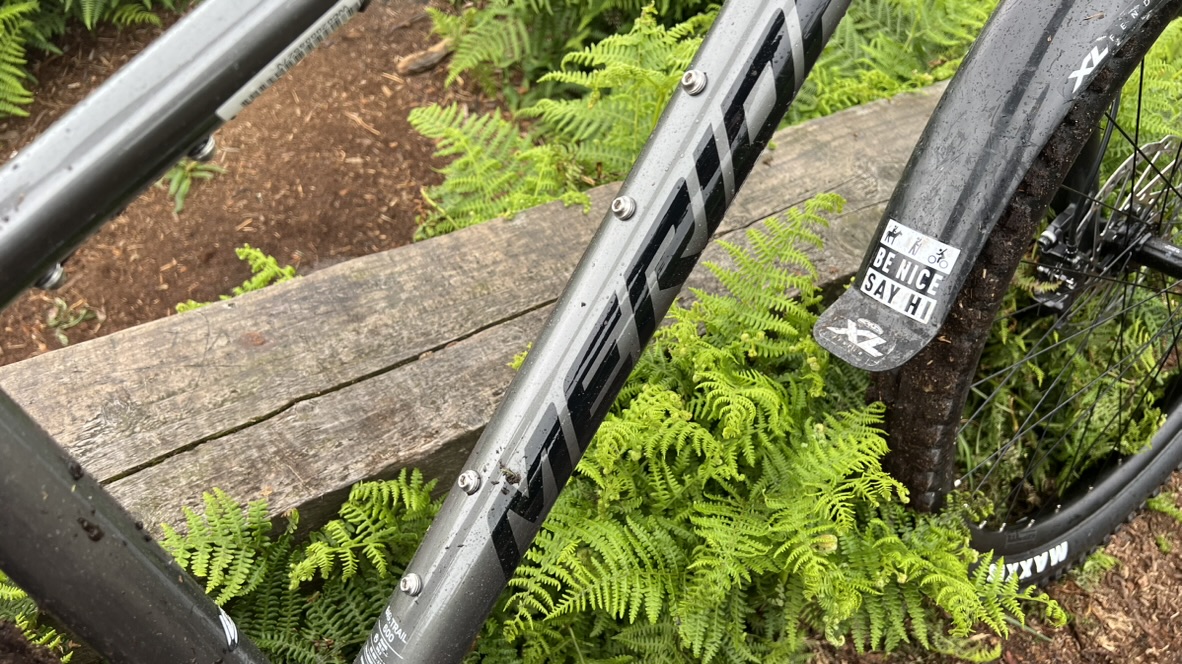
Design
Before you freak out about the idea of utility mounts making it look like you’ve stolen a Dutch nan’s shopping bike to hit the trails on, rest assured that the kickstand, rack, and full fender fixtures are very cleverly hidden. The only ‘basic’ looking part is the big seat stay gusset that can mount the ‘whale tail’ rear fender. That’s only a thin plate though and when you look closely at the top quality welding, hollowed out rear dropouts and the flowing hydroformed tube shapes, Merida’s metal working mastery is clear to see.
The big head tube allows the use of ‘Wire Port’ internal brake and gear routing through the Acros headset to keep the main tubes clear and clean, and Merida has capitalized on that with relatively slim and shallow, organically shaped top and down tubes. The down tube is long enough to fit two bottle cages on every size (500 + 700ml on XS – M, 2 x 700ml on L – XL) with an accessory mount in the top tube ‘armpit’. That leaves the oversized seat post straight and clear to take a long travel dropper (200mm on the ‘Long’ size I rode) in a stiffness and reliability boosting 34.9mm diameter. There’s only room for a 2.4in rear tire between the curving rear stays though, which is a shame as fatter rear rubber is a nice option on a hardtail that’s begging to be ridden properly hard.
You do get a top chain guide mounted on the ISCG bolts around the bottom bracket though, and a 55mm chain line keeps the links clearer of mud on dirty days. Chaotic trail calmness gets another real audio and emotional upgrade from the fully foam-sleeved cables inside the mainframe and a dual-compound clip-on chainstay guard that even has hollow nodules to further deaden chain noise. While we’re on the subject of detailing, the seat tube clamp is a really neat, crisp, twin-band piece that elevates the overall aesthetic more than a basic forged option. Finally, the far end of the stays uses a distinctive angular ‘elbow’ above the dropouts to give clearance to fit the four-pot Shimano brakes on the chainstays rather than seat stays where they could potentially reduce compliance. Do I even have to say it’s UDH too, or is that just expected on new bikes now?
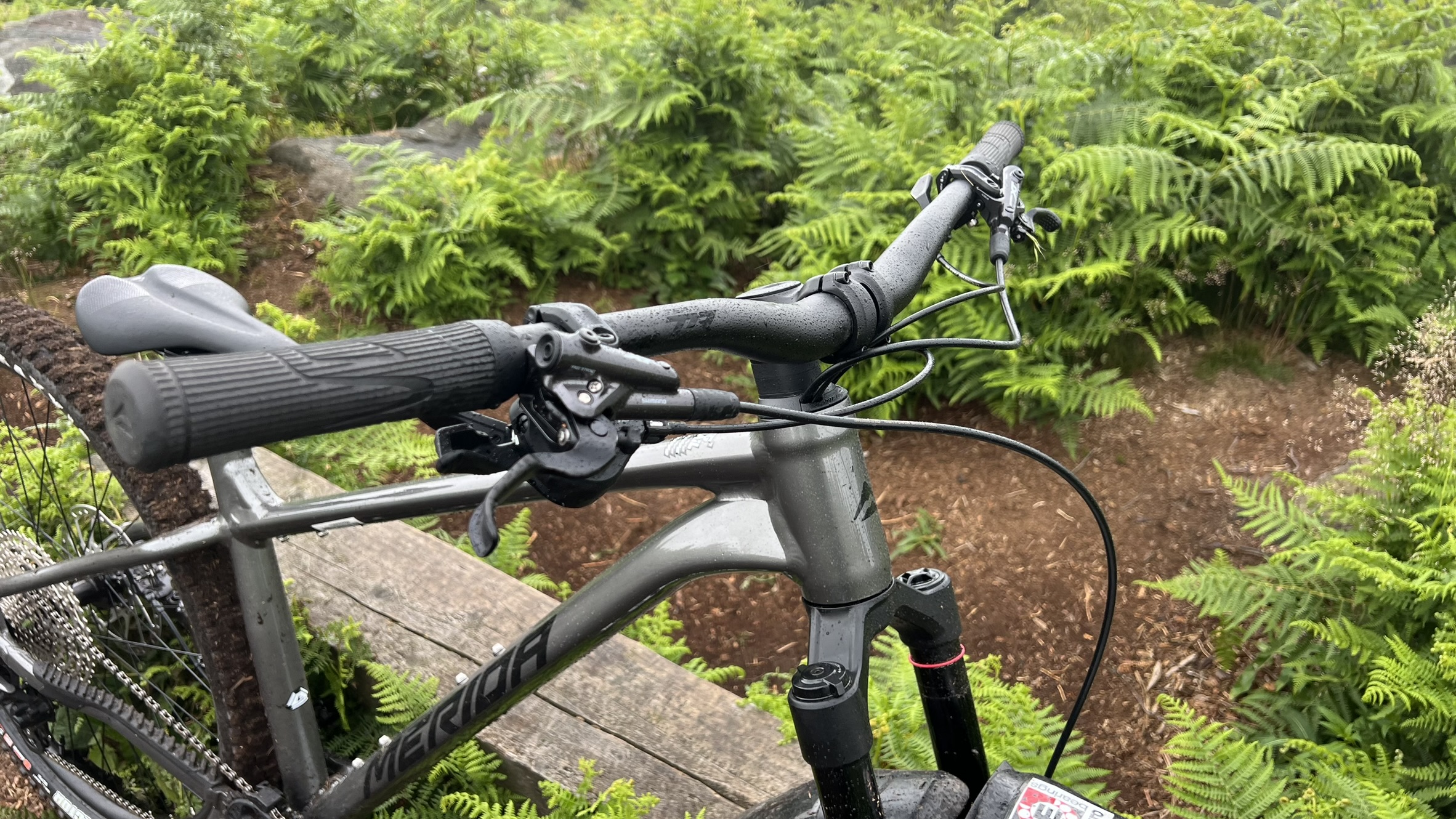
Geometry
If you’ve been watching what Merida have done with the ‘Agilometer’ geometry on its One-Sixty, One-Forty and One-Twenty full-suspension bikes, then the angles and lengths of the new Big Trail will be less of a surprise. 64-degree head tube, 70mm BB drop and 480mm reach (on a size Long) are still proper rad for a mass-production hardtail rather than a niche cult bike. Merida has been slightly more conservative with their 76.5-degree seat angle compared to its crazy steep full-sus bikes, but it’s still very much a front and centered riding position. If you don’t want a super long stretch then relatively short seat tubes mean you can size down without running into saddle height issues either, hence the use of Extra Short / Extra Long, etc. naming rather than Extra Small / Extra Large, etc.
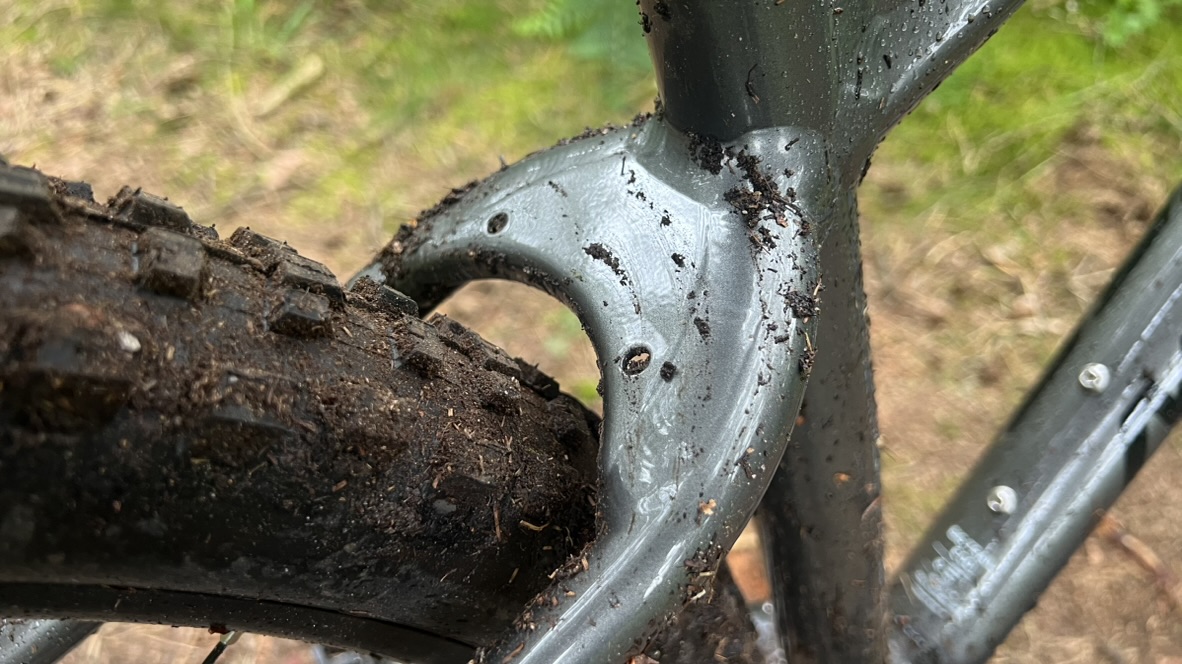
Components and build
Merida have matched the more radical angles with a more control focused build on the Big Trail too. That headlines with the Shimano XT brakes with a 200mm front rotor connecting to the trail through a 2.5in wide, triple MaxTerra compound Maxxis DHF tire. A basic RockShox Pike fork separates them with 140mm of travel and Shimano hubs on the 30mm internal Merida rims create a sturdy wheelset. Hassle your Merida dealer to fit the tape, valves and sealant needed to turn them tubeless before you leave the shop though as they aren’t supplied. An EXO+ carcass on the rear Dissector tire means you might not need an insert unless you’re really getting rowdy in the rocks. Deore gears deliver their usual remarkably smooth and accurate shifting reminder that you don’t need anything fancier. The low cost of replacement reduces the concerns about close passing trailside boulders too. While my test bike came with 170mm cranks, production bikes will have 165mm arms on all sizes but XL, which means more ground clearance to compensate for the super low bottom bracket.
The rest of the bike is Merida own brand, which is totally fine. I particularly appreciated the higher rise bars which help lifts the far away front end. The ‘Ergon–ish’ grips are comfy and the short coffin-shaped stem gets matching coffin-shaped spacers underneath. Merida have used a fixed-length dropper post rather than an adjustable one to save a bit of cash, and the lumpy lever mount isn’t the prettiest thing, but the lever action is actually really smooth. The Merida saddle is comfy enough and it comes with a mini-tool mounted underneath. The rear axle has a 4mm and 6mm hex head built into it too.
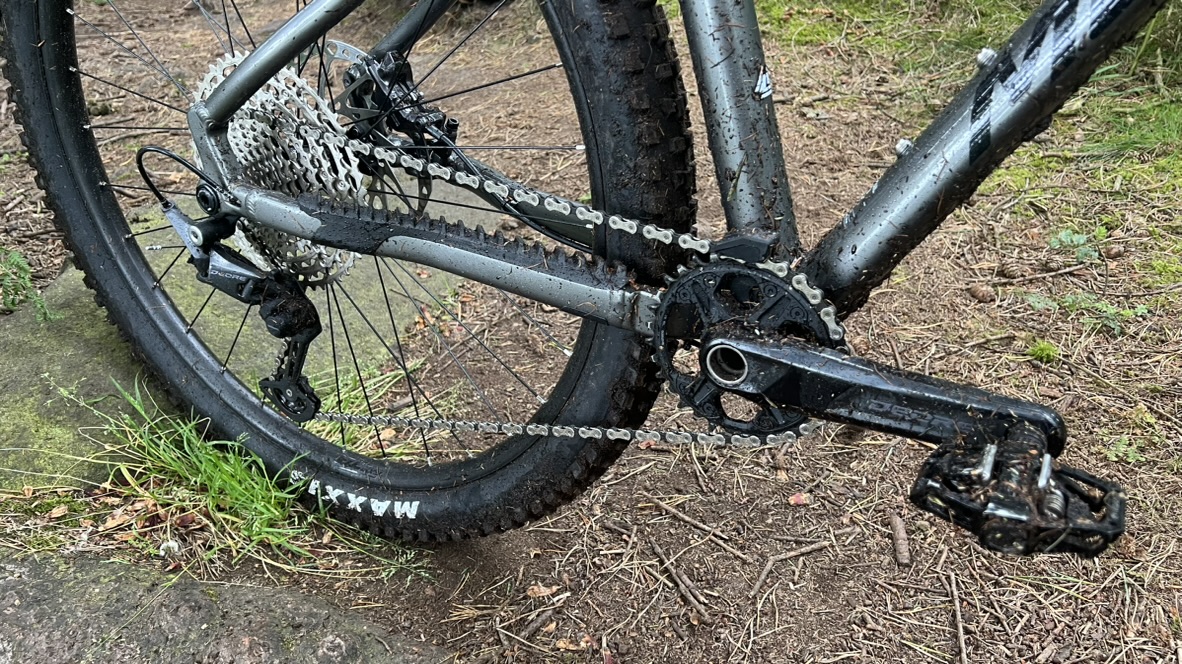
Ride, handling and performance
While all the detailing and smart spec is important to the overall package, what should dominate a lot of riders decision to put the Big Trail on your short list is the ride vibe. That’s because the Big Trail isn’t just an exercise in extreme handling arithmetic, it’s clearly a bike that’s been ride tested into a really righteous balance for as much radness as you can handle. It only took about five minutes into the first ride for the super slack front end to save me. Turning a full facial slam into a self-steering emergency press-up save, when the back end went sideways on a wet root as I abseiled a janky drop. With that precedent set, the rest of the first ride was all about pushing harder and harder and realizing just how much the Big Trail could handle. Actually ‘handle’ sounds a bit half-hearted, the naturally centralized, feet-on-the-floor feel insists you attack all the sketchy stuff as fast as possible. It totally dominated snaking chutes that I’d been really concerned about rolling into beforehand and it’ll rail a turn like someone has you on a lunge rein.
It’s not just the geo either. Those slim, pressure molded main tubes set up an excellent blend of traction-boosting compliance without worrying twang or wander that could teach many steel bikes a lesson. There’s enough spring and life to really flatter the grip, comfort and smoothness of the base-level fork too, so I never worried about fully committing the front end into the most random rut, root and rock off-piste. As mentioned previously, the higher riser bars help lift the nose off drops or manualing through ditches. The seat angle means there’s enough weight over the front to keep the tire steering and straight on steep scrambles too. It’s a good job the production bikes will have shorter cranks though, as I had to do a lot of half-cranking to stop tapping out on ruts and stepped sections. While it's relatively light for a trail hardtail, the build kit and grippy tires means it's no XC race bike if you're really into long rides and hefty climbs.
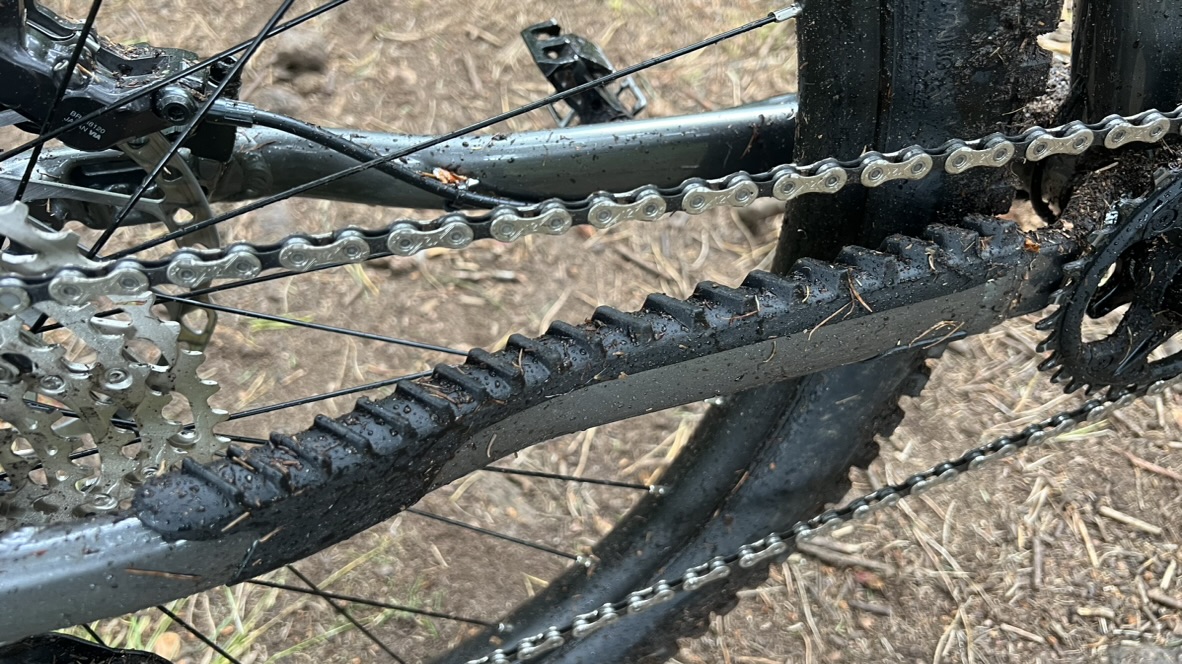
Inevitably the rear end also makes things a game of two halves in terms of the amount of abuse coming from the back wheel. That massive seat tube definitely means sitting and pedaling through rough sections can be a jolting, momentum-spilling experience. Hover your butt off the saddle though and there was enough give in the stays to not find every old fracture in my ankles even on long, rough descents. Backing off ten percent on jagged and ragged technical climbs rather than charging bluntly at everything felt like it gave a thirty percent payback in terms of flow and grip too.
I can’t underestimate how calming the quietness of foam-wrapped cables, pneumatic chain protector, hushed Shimano rear hub and even the genius spec of rattle-free non-finned pads in the XT brakes is when things might otherwise feel frantic either. It’s literally like wearing a full-face helmet in terms of reducing the acoustic anarchy that automatically spikes anxiety as soon as things start kicking off. Another sure sign that this is a bike that’s been created and crafted by real riders who understand what a big deal small things can be, not just desk jockeys looking over the shoulders of other brands.
Video of Guy riding the Big Trail 600 on some steep, natural trails
Verdict
If you want to go on a forum to complain, then yeah I’d rather the Big Trail had normal cable routing and space for a bigger rear tire to reduce the game of two halves impact response. The riotously enjoyable, yet fail-forgiving ride of the radical geometry and compliant yet controlled front end outweighs those niggles by many multiples on genuinely big trails though. Both frame and parts pick are loaded with solid choices and smart details that really elevate the complete package too.
The death of Nukeproof and Ragley has dramatically reduced the options for affordable but properly radical hardtails, which makes the reshaped Merida even more welcome. You get the same frame on the £2,000 / €2,350 600 version here, the £1,500 / €1,175 Big Trail 500 (with a RockShox Psylo fork), and £1,100 / €1,300 300 version (Suntour XCR34 fork). Whatever model you buy, the fact it’s a full-feature daily driver for commuting or utility use potentially makes it even better value
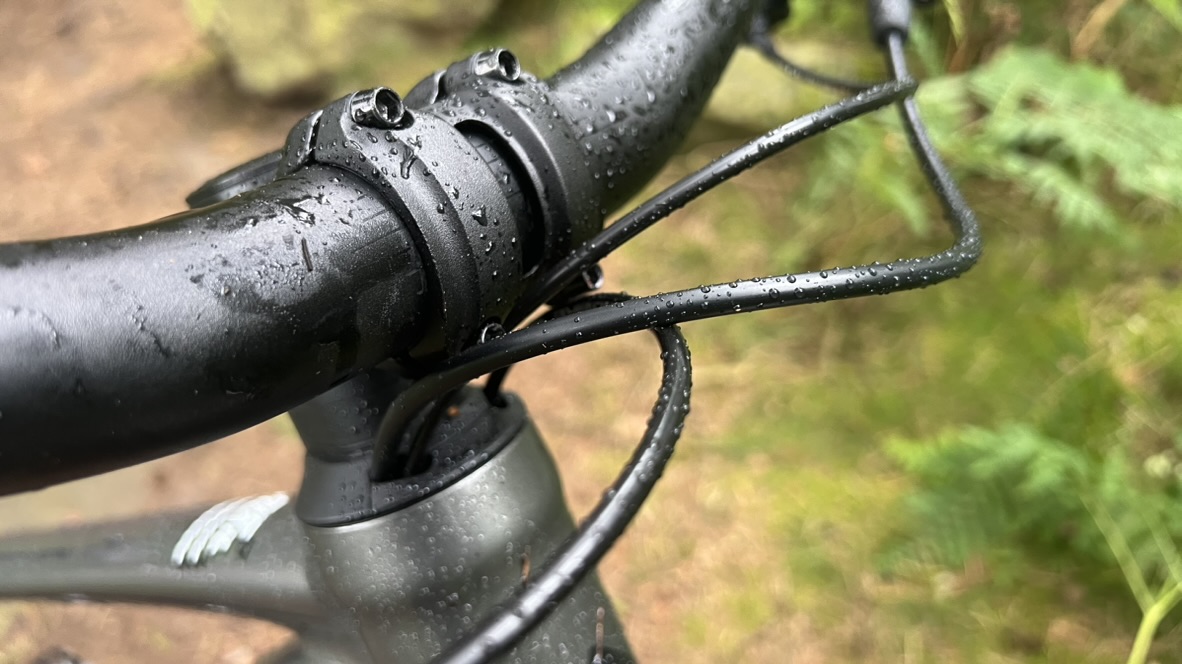
Test conditions
Surface: Natural off piste loam, roots and loose rock and a bit of kitty litter red run track
Trails: Natural Enduro DH and singletrack play runs and red and black grade trail center silliness
Tech spec: Merida Big Trail 600
Discipline: Trail
Price: £2,000 / €2,350 / not available in US
Head angle: 64 degrees
Frame material: Hydroformed aluminum alloy
Fork: RockShox Pike, 140mm travel
Size: X Short, Short, Medium, Long, X Long
Weight: 14.48kg (Long tested)
Wheel size: 29in
Chainset: Shimano Deore , 32T, 170mm arms with Hollowtech II bottom bracket.
Rear mech: Shimano Deore
Shifter: Shimano Deore
Cassette: Shimano Deore 12-speed 11-51T
Brakes: Shimano Deore XT hydraulic disc brakes with 200/180mm rotors
Tires: Maxxis DHF 3C MaxTerra 29x2.5in front and Maxxis Dissector 3C MaxTerra 29x2.4in rear tires
Wheels: Merida 30mm tubeless rims on Shimano hubs
Bars: Merida high rise alloy 780mm width
Stem: Merida alloy
Grips: Merida Ergo lock-on
Seatpost: Merida EXP TR 200mm dropper
Saddle: Merida TR







